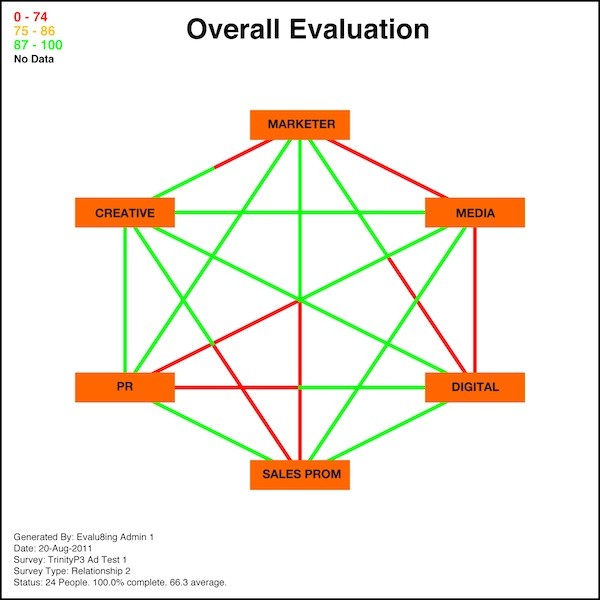Contact Information
Three International Towers, Level 24, Tower 3, 300 Barangaroo AveSydney, NSW 2000
Australia
Social:
Darren Woolley
Founder & Global CEO
Basic Info
Founded in: 2000
Employees: 20
Founded in: 2000
Employees: 20
TrinityP3
Three International Towers, Level 24, Tower 3, 300 Barangaroo AveSydney, NSW 2000
Australia
Darren Woolley
Founder & Global CEO
Delivering the benefits of greater collaboration and business strategy alignment
With increasing complexity advertisers are finding limitations in relying on media and creative agencies as their main advertising providers. Today, most advertisers are juggling five or more providers including digital and direct marking, public relations, experiential, promotions companies and more.
At best, the management of this range of providers is time and resource consuming and at worst leads to a fragmentation in the brand communications with each provider doing their “own thing”.
Identifying your key communications providers
The very first step is to identify the various providers currently on your roster. Often, over time, advertisers will accrue a growing number of providers. In one case an advertiser had more than twenty graphic design providers through leakage outside the original panel of three.
Often, in identifying the various providers, many advertisers will then go through a process of rationalisation to deliver economies of scale in their expenditure.
Defining your requirements and the role each will play
The next step is to then define your total requirements to fulfill your marketing plan. This includes budget, outcomes, planned campaigns and known activities.
Traditionally the activities would then be placed against the particular providers based on their core competency or the core service they were engaged to provide.
This is becoming increasingly difficult with most suppliers expanding and blurring their range of services to capture more revenue opportunities with technology assisting this in the digital domain.
Developing the appropriate structure to deliver outcomes
There are a number of different structural options for managing the relationships, from the traditional client agency relationship where the marketing team is responsible for the individual management and co-ordination of the various and usually small number of service providers to a collaborative adviser model where the service providers work collaboratively as advisers to the marketing team.
Many of these options are presented in the TrinityP3 discussion paper available on Slideshare.
The right structural / organisational model depends on the culture, needs and requirements of the marketing team.
Implementing remuneration strategy to encourage collaboration
Many marketers attempt to create a collaborative working environment between their various specialist service providers. While this can be successful in the short term, invariably power struggles and demarcation disputes develop as the various providers compete for incremental revenue.
The most successful approach is to take a whole of relationship approach to the task including review of remuneration, service level agreements, reporting and deliverables.
In our experience, many of the attempts to create a more collaborative approach to service delivery is undermined by contracts and remuneration that rewards individual providers higher than collective outcomes.
Managing the process to deliver the desired outcome
Without a comprehensive approach to the way in which the service providers are engaged in the relationship, efforts to develop more collaborative working relationships are almost always doomed to fail through struggles over roles, responsibilities and remuneration.
Once you have these aligned across your roster you then need to ensure regular measurement and management of the roster to improve collaboration using a system such as Evalu8ing.

